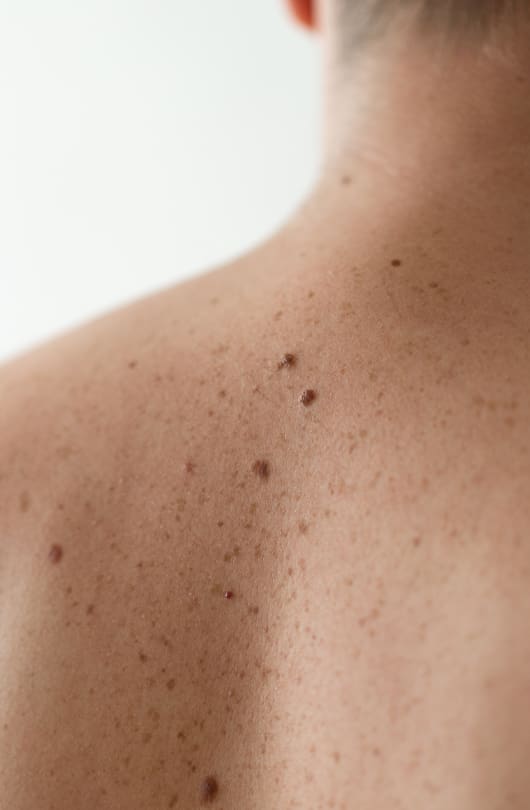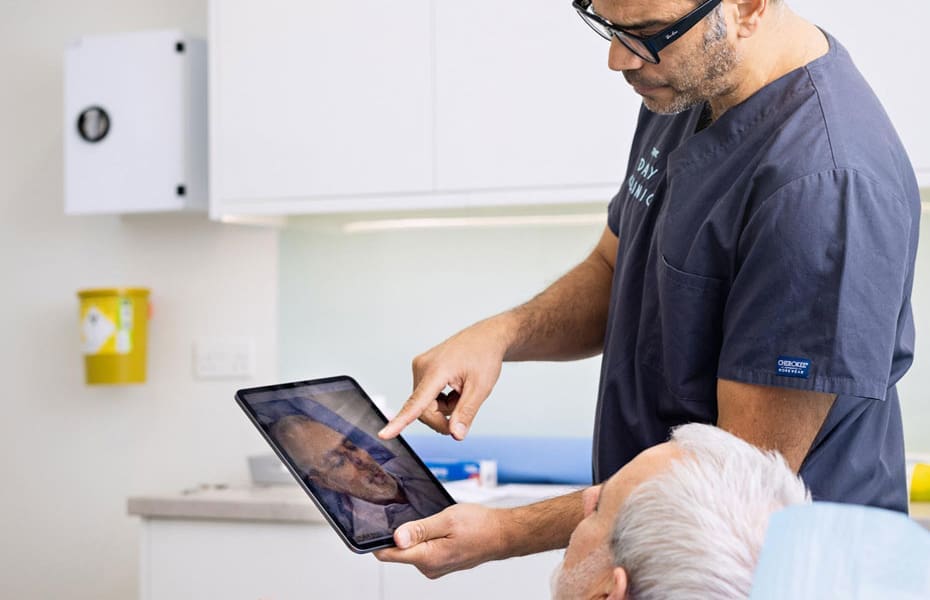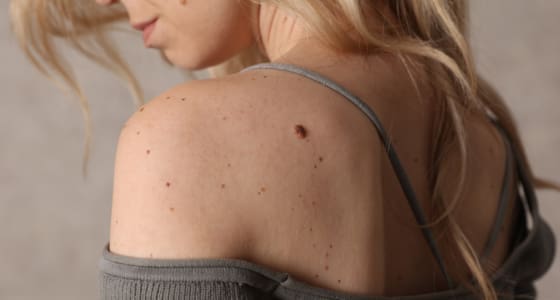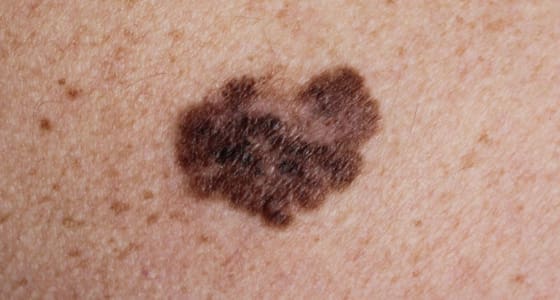They typically present as small, dark spots or patches which are caused by a cluster of pigmented cells known as melanocytes. Moles can vary in colour, size, shape and texture. Although in most cases moles are completely harmless, it’s important to be aware of changes to your moles, and the development of new ones, particularly those which have an irregular appearance, as this can be a sign of skin cancer.
You should seek professional advice if you notice any of the following:
- The edges of the mole are irregular, blurred or jagged
- It is asymmetrical; one half does not match the other
- It changes in size, colour, shape or texture
- It becomes itchy, inflamed, painful or bleeds
- It protrudes and catches on clothing etc causing irritation
Many people chose to have their moles removed purely for cosmetic reasons.
Prior to having your mole removed, a dermatology or plastic surgery consultant will examine your mole and talk through the most effective procedure for achieving the best outcome for you. Moles are normally removed using surgical excision, but we also treat moles using shave excision, cryotherapy or punch biopsy. The method we use will depend on the characteristics of the mole and whether it needs to be sent away for testing or ‘histology’.
Your consultant will clearly explain what the treatment will involve, including the cost, healing time and expected outcome. They will also go through possible risks of your treatment and answer any questions you may have.
Mole removal is frequently carried-out as a ‘see and treat’, which means that you can have the consultation and the treatment in the same appointment. This can be more convenient and cost effective for patients. You can discuss this option at the time of booking.








